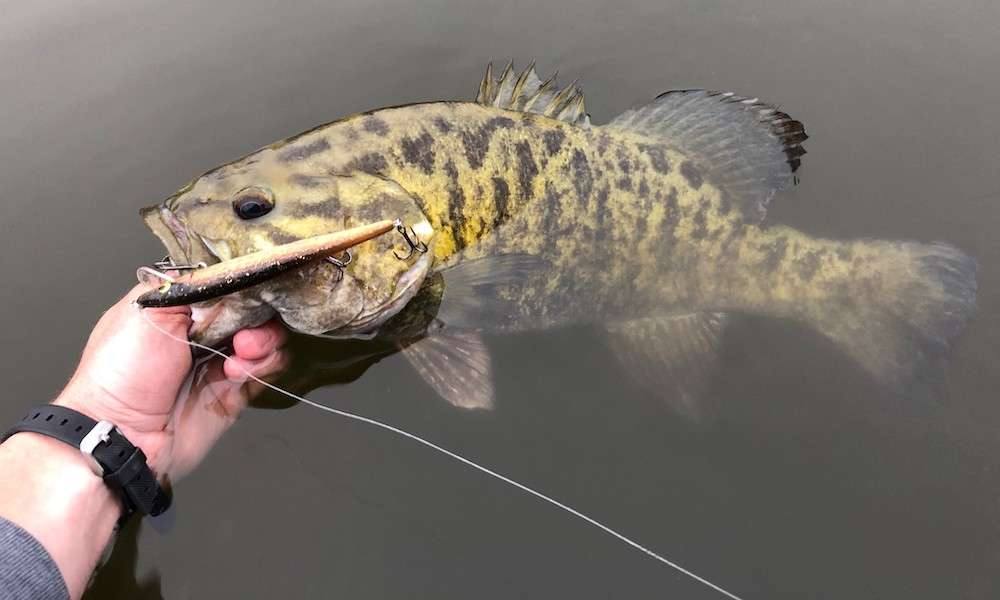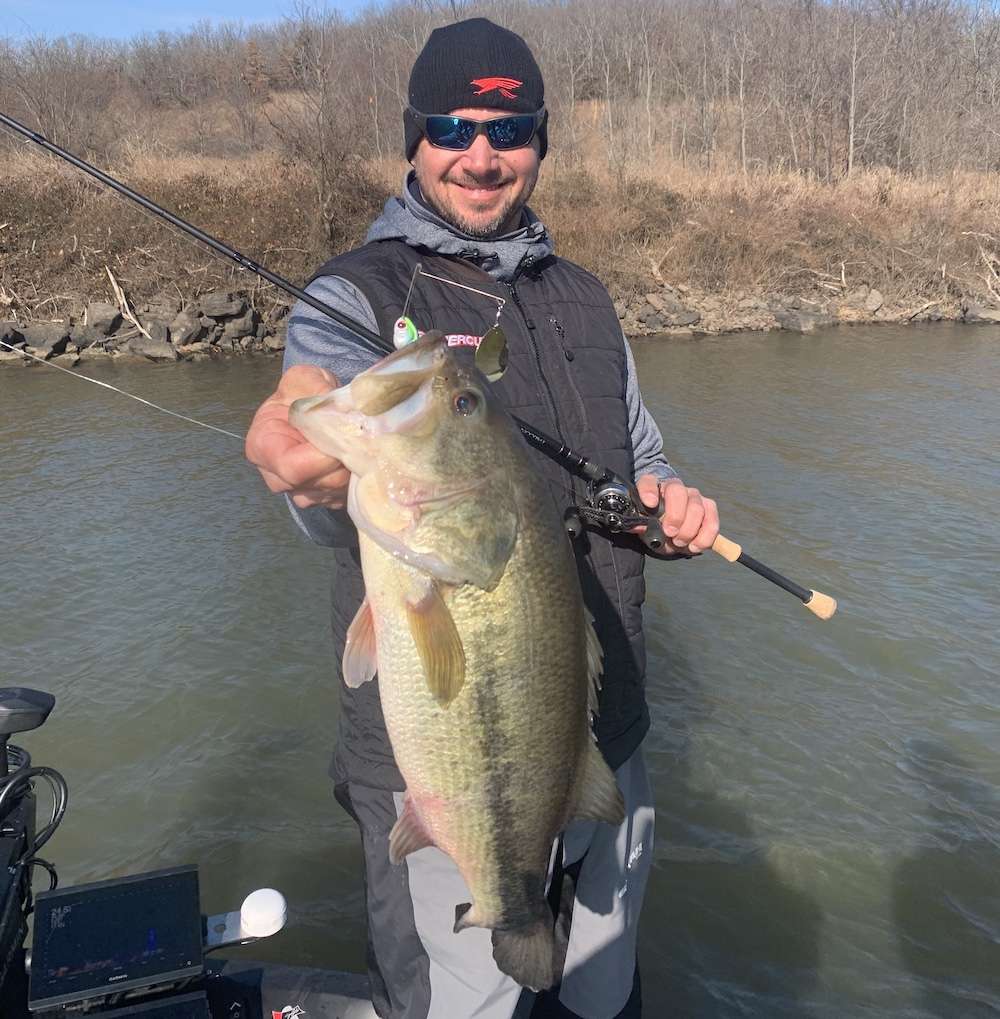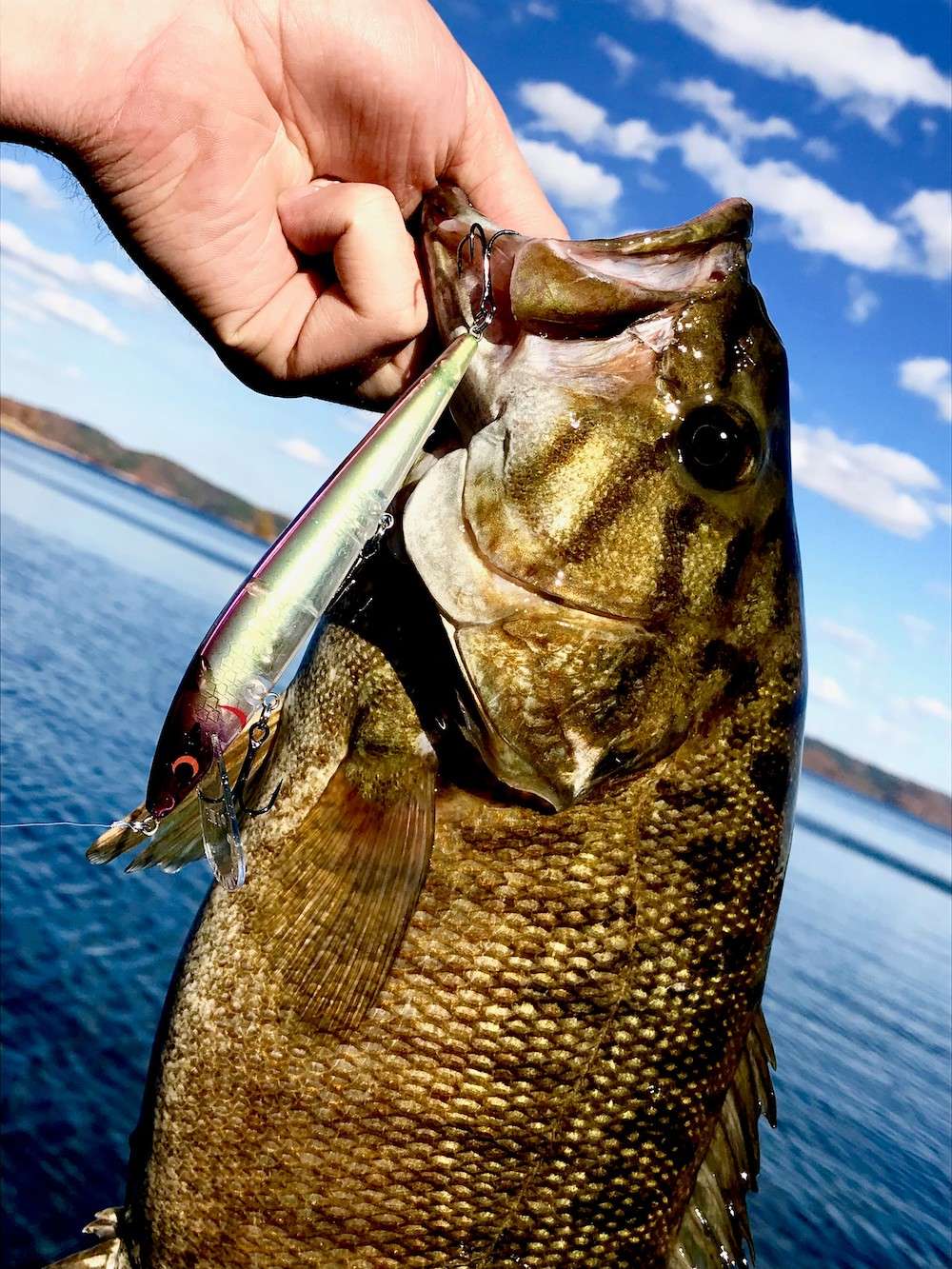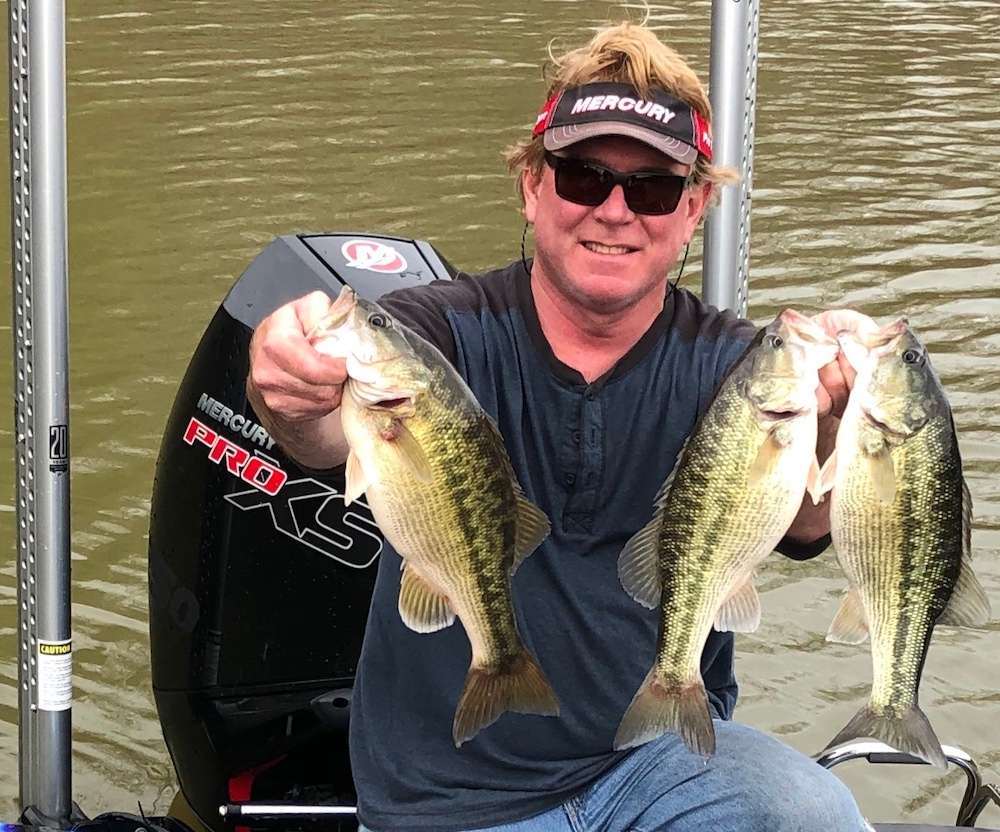
Of all the weird things that bass do, not much confounds, confuses and frustrates us more than suspending. Usually a deep-water thing, hovering out there in random land, the fish seem to thumb their noses at grumbling anglers.
Jason Christie calls suspended fish the biggest thorn in the sides of anglers everywhere. Many would likely agree, but it’s not a lost cause.
Know their moves
While fishing pressure and weather changes may prompt fish to suspend pretty much anytime but the spawn, Christie notes that winter tends to see the most predictable suspending. A lot of the bait is deeper, and the typically clear water bodes well for sight feeding.
“For fish to suspend, in most cases, you have to have a reason for them to get there,” Christie said. “They may suspend around standing timber or boat docks, but mainly what you see across the country is they’ll suspend around bait.”

Christie finds that bass suspending around bait are almost always on the move. These fish are nearly impossible to target unless you can actually see the bait near the surface or you’re watching the action with realtime sonar like his Garmin Panoptix Livescope.
“Livescope has made those fish catchable because when you’re out there over 50-100 feet of water, you don’t know where they’re at,” Christie said. “I would rather target trees, docks, bridge piers, brush piles — something they’re suspending around.
“If you pull up to a tree, you can cast at that tree, but if you’re out in the middle of a creek channel, those fish can be anywhere top to bottom — and anywhere around the boat. I will not target fish out in the middle without Livescope because the chances are very slim that you’ll catch one or multiples, unless they’re blowing up on bait.”
Structure-oriented suspenders are more consistent, Christie said. Based on weather and light conditions, they’ll move up and down, but they don’t go very far, as opposed to what those following bait will do.
A warm day may find the structure-oriented fish rising from 20 feet up to 10; while cold spells will invert the movement. Just don’t expect the fish to follow a script.
“You can’t say, ‘It’s sunny today, so they’re going to be suspended 8 feet deep,’” Christie said. “It’s something different; it’s the personality of the fish or that group of fish. It might be bait; the bait may be high the day, or the bait may be low.
“I’ve pulled up to docks or trees in the morning and saw on Livescope the fish are 10 feet deep. You leave and come back the middle of the day and that same group of fish has moved down to 20 feet.”
Once you dial in a bunch of suspenders, feeding competition may work in your favor. Baitfish imitators are usually best. Here are a few examples.
Living large
While fast movers trigger summer bass, Christie’s go-to for suspended winter largemouth is slow-rolling a 1-ounce white Booyah Covert spinnerbait with double willow-leaf blades. An enticing profile brought through the feeding zone is hard to resist.

“With Livescope, I know exactly how deep the fish are, so I can throw my bait out there and count it down; you always want to put it above their eyes,” Christie said.
Jerkbaits also fit the plan, and Christie catches a lot of winter suspenders on a blue chrome Smithwick Rogue, which mimics a dying shad. If the fish are deeper than his Rogue reaches, a 5-inch YUM Money Minnow on a 1/2- to 3/4-ounce swimbait head gets the job done.
Call ’em up
Christie finds the same baits will tempt smallmouth, but the brown ones almost always suspend around bait. Plucking a smallie out of a treetop is not unheard of, but they usually move with the food.
The good thing about smallies is they are easily manipulated. Christie compared them to a pack of wolves competing for meals.
“A lot times, you may be fishing a school of smallmouth off the bottom, or close to the bottom, and once you catch one, you bring the rest of them up,” he said. “A smallmouth is a curious creature. They’re really bad about getting around the boat.

“Once I pull the school up and suspend around the boat, I’m able to use Livescope and catch another two or three. If you hurry up and put that first smallmouth in the livewell or release it, you can find the rest of the school.”
Using a Money Minnow or a jig to entice the first brown fish bite, Christie said it’s actually rare to catch more than one this way. Smallies may not be suspending when he finds them, but ringing the dinner bell can sure put them in this mode.
Johnny on the spot
On his Gaston Lake home waters, spotted bass ace Rick Morris has perfected a few techniques that’ll produce most anywhere these fish live. Bluffs or underwater drops are his deal, because that vertical profile adjacent to deep water puts a food court right next to the fish’s lounge.

“They like to come in quickly and feed shallow; it’s a short distance from the open water to (a hard edge),” Morris said. “Bluffs are also going to have a little more current and wind effect, which helps with feeding.”
It’s great when you find a large group of spots, but Morris knows their tendency to fracture into smaller roaming pods. Bait density has a lot to do with this and without forward-facing sonar, you’re basically guessing.
That being said, Morris finds certain bluff features attractive to suspended spots. A tapering bluff end, or a little pocket creating points on either side, presents the kind of transition area that predators leverage.
Morris also hunts suspended spots over underwater ridges with tapering ends. Kind of the subsurface version of a bluff, the same appeal of vertical structure adjacent to deep water applies. In any scenario, Morris values diversity.
“Fishing for suspended spots, you have to have a variety of tools,” he said. “Like offshore ledge fishing, they get used to seeing the same baits.”
Morris’ starting lineup includes:
- War Eagle underspin with a white boot tail. An easy presentation with lots of flash and vibration, he’ll cast the bait, count it down to the target zone and slow reel it home.
- Heddon Sonar Flash blade bait or Cotton Cordell CC Spoon. He’ll count these baits down and then yo-yo them in the strike zone.
- Wacky rigged 5-inch Dinger in shad pattern: “It’s slow fishing, but they will bite it.”
- Morris also likes a Rogue, but if he needs to get his jerkbait deeper than its design depth, he’ll Carolina rig it on a 2-foot leader with a 1/4- or 1/2-ounce bullet weight with several bobber stops.
“The Rogue with the longer lip makes more vibration, whereas the smaller lip comes through the water easier, so you need less weight,” Morris said.
Stressing the importance of investing adequate search time — idling and downscaling for those prominent marks that indicate a big-fish area — Morris says mindset can be just as important as bait choice.
“It’s the No. 1 excuse for not being able to catch fish: They’re suspended,” he notes. “But don’t think you can’t catch suspended bass, because you can.”





